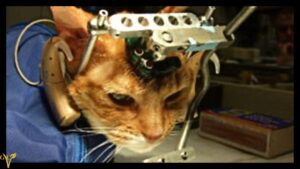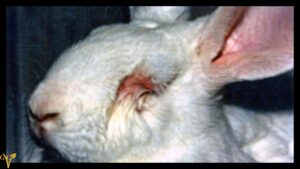Whether you’re vegan, vegetarian or just a pet lover, you need to be aware of vivisection or animal testing.
 In today’s blog, I’m talking about vivisection, more commonly called animal testing. It’s the practice of conducting tests on various animals, all in the name of science, medicine and beauty.
In today’s blog, I’m talking about vivisection, more commonly called animal testing. It’s the practice of conducting tests on various animals, all in the name of science, medicine and beauty.
First, let me give you some stats.
- In 2022 in the USA, approximately 22 million animals were being used for research in laboratories at any given time – that’s not just for the year – that’s for any given time.
- Over 30% of the experiments involve moderate-to-severe suffering.
- Over 98% of drugs tested on animals were never sold in stores. I’m going to assume that the outcomes of the tests were so dire on the animals it was deemed unsuitable for humans.
- There are over 192 million research animals worldwide.
More on USA stats
In Aotearoa New Zealand, more than 300,000 animals are used for research, testing, and teaching purposes, while another 130,000 animals are bred for scientific purposes but end up being unused and euthanised.
Resource: SAFE
In Australia, it’s around 6 million that die. I don’t have the figures for UK, Europe, or China but they all test.
In 2014 in Aotearoa New Zealand, animal testing of party pills was banned, and a year later, a ban on animal testing of cosmetics came into force. This was just for products made here; products tested overseas can still be imported. Also, if a cosmetic company wants to export to China, they have to prove the product has been animal tested, which has to be done overseas.
What are these tests?
- There are several reasons (worldwide) why governments allow testing.
- Pharmaceutical companies test for various reasons, mainly to see if a product is viable.
- Tests of new technologies are done for the health of living creatures.
- Experiments using chemicals, hazardous and toxic materials.
- Some medical schools use animal testing/research for surgery practices, psychological tests, pharmacological testing and more.
- Cosmetic research. However, this is being phased out as more countries ban its use.
- Agriculture research. Used for veterinary and biological research, testing and teaching. Also, some are experimented on to make them more ‘productive’, and now with climate change, they are used to reduce methane emissions.
The animals used for testing are monkeys, dogs, rabbits, rats and mice, pigs, cows, deer, fish and birds, and guinea pigs – really, it’s like no animal is exempt.

Animal testing is mandatory in most countries before any product (aside from cosmetics) can be let loose on the public. Many countries have stopped testing on primates as it is unethical and irrelevant.
It serves little value and causes immense suffering. A study done in 2016 showed that the cruel experiments done on monkeys’ brains were useless as they were flawed and served little value. Why? Because there are some rather significant differences between a monkey brain and a human brain.
Sadly vaccine developers say it saves human lives and back that up with the recent COVID pandemic, and although testing on chimpanzees is banned, rhesus monkeys are still being used.
Some experiments use the 50/50 rule, which means that 50% of the animals are given as much of the substance as necessary to get them to die or close to death, and the other 50% are given enough to see if there is a reaction.
Animals are force-fed, forced to breathe toxic substances, they may have food and water deprivation, prolonged periods of physical restraint, infliction of burns and other wounds to study the healing process, infliction of pain to study its effects and remedies, injected with toxic substances, given diseases and when the experiment ends they are killed by carbon dioxide asphyxiation, neck-breaking, decapitation, or other means.
The Draize eye test, in particular, is really nasty. Cosmetics companies use it, and it evaluates irritation caused by shampoos and other products. However, the Draize test is also conducted on the skin. Research companies use it to identify chemicals that could cause human itching or burning.

They generally use rabbits put into stocks with their eyelids held open by clips, so they cannot blink away the products. Once the animal’s injuries are recorded, it is killed.
News Flash – there are other ways to test. Studying cell cultures in a petri dish can produce more relevant results because human cells are used.
Then there is Microdosing which is used on human volunteers. It is the administration of doses too small to cause adverse reactions. The dose is given then the blood is analysed.
There is also artificial human skin, and it’s commercially available. It’s made from sheets of human skin cells grown in test tubes and, again, can produce results far superior to testing chemicals on animal skin.
Microfluidic chip technology is an emerging tool in the field of biomedical application – these are lined with human cells and recreate the functions of human organs.
Computer models like virtual reconstructions of human molecular structures can predict the toxicity of substances without invasive experiments on animals.
Animals make very poor test subjects because they are different to humans. And I’ll give you one example of this.
In the 1950s, the sleeping pill thalidomide was tested on animals before commercial release with no adverse effects. Thalidomide caused over 24,000 babies to be born with severe deformities. So then they tested again on pregnant mice, rats, guinea pigs, cats and hamsters, and they did not get any congenital disabilities unless the dose was administered at extremely high levels.
This is not a rare case – there are so many other examples, some not too severe but others that have resulted in thousands of deaths before being pulled from the market.
Aside from the fact that vivisection is insanely cruel, there is no reason in this 21st century to be testing on animals.
Please support the companies that DON’T do animal testing.
Until next time…









0 Comments